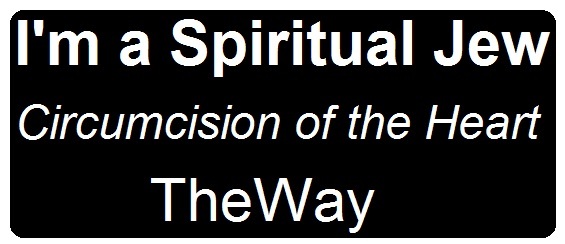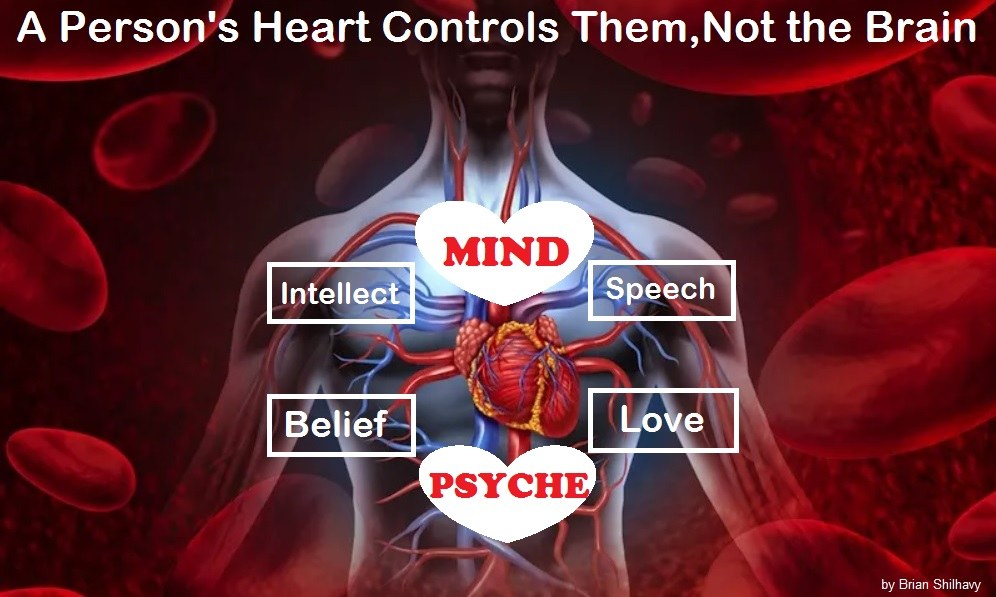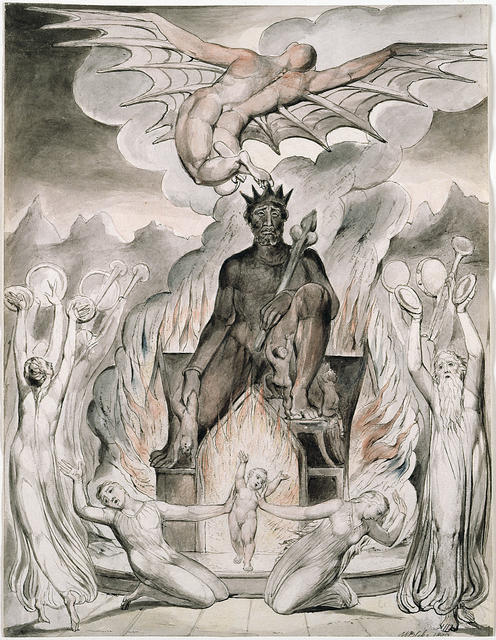
Virtual School Dangers: The Hazards of a Police State Education During COVID-19
“There was of course no way of knowing whether you were being watched at any given moment. How often, or on what system, the Thought Police plugged in on any individual wire was guesswork. It was even conceivable that they watched everybody all the time. But at any rate they could plug in your wire whenever they wanted to. You had to live—did live, from habit that became instinct—in the assumption that every sound you made was overheard, and, except in darkness, every movement scrutinized.”—George Orwell, 1984
by John W. Whitehead
The Rutherford Institute
Once upon a time in America, parents breathed a sigh of relief when their kids went back to school after a summer’s hiatus, content in the knowledge that for a good portion of the day, their kids would be gainfully occupied, out of harm’s way, and out of trouble.
Back then, if you talked back to a teacher, or played a prank on a classmate, or just failed to do your homework, you might find yourself in detention or doing an extra writing assignment after school or suffering through a parent-teacher conference about your shortcomings.
Of course, that was before school shootings became a part of our national lexicon.
As a result, over the course of the past 30 years, the need to keep the schools “safe” from drugs and weapons has become a thinly disguised, profit-driven campaign to transform them into quasi-prisons, complete with surveillance cameras, metal detectors, police patrols, zero tolerance policies, lock downs, drug sniffing dogs, school resource officers, strip searches, and active shooter drills.
Suddenly, under school zero tolerance policies, students were being punished with suspension, expulsion, and even arrest for childish behavior and minor transgressions such as playing cops and robbers on the playground, bringing LEGOs to school, or having a food fight.
Things got even worse once schools started to rely on police (school resource officers) to “deal with minor rule breaking: sagging pants, disrespectful comments, brief physical skirmishes.”
As a result, students are being subjected to police tactics such as handcuffs, leg shackles, tasers and excessive force for “acting up,” in addition to being ticketed, fined and sent to court for behavior perceived as defiant, disruptive or disorderly such as spraying perfume and writing on a desk.
This is what constitutes a police state education these days: lessons in compliance meted out with aggressive, totalitarian tactics.
The COVID-19 pandemic has added yet another troubling layer to the ways in which students (and their families) can run afoul of a police state education now that school (virtual or in-person) is back in session.
Significant numbers of schools within the nation’s 13,000 school districts have opted to hold their classes online, in-person or a hybrid of the two, fearing further outbreaks of the virus. Yet this unprecedented foray into the virtual world carries its own unique risks.
Apart from the technological logistics of ensuring that millions of students across the country have adequate computer and internet access, consider the Fourth Amendment ramifications of having students attend school online via video classes from the privacy of their homes.
Suddenly, you’ve got government officials (in this case, teachers or anyone at the school on the other end of that virtual connection) being allowed carte blanche visual access to the inside of one’s private home without a warrant.
Anything those school officials see—anything they hear—anything they photograph or record—during that virtual visit becomes fair game for scrutiny and investigation not just by school officials but by every interconnected government agency to which that information can be relayed: the police, social services, animal control, the Department of Homeland Security, you name it.
After all, this is the age of overcriminalization, when the federal criminal code is so vast that the average American unknowingly commits about three federal felonies per day, a U.S. Attorney can find a way to charge just about anyone with violating federal law.
It’s a train wreck just waiting to happen.
In fact, we’re already seeing this play out across the country. For instance, a 12-year-old Colorado boy was suspended for flashing a toy gun across his computer screen during an online art class. Without bothering to notify or consult with the boy’s parents, police carried out a welfare check on Isaiah Elliott, who suffers from ADHD and learning disabilities.
An 11-year-old Maryland boy had police descend on his home in search of weapons after school officials spied a BB gun on the boy’s bedroom wall during a Google Meet class on his laptop. School officials reported the sighting to the school resource officer, who then called the police.
And in New York and Massachusetts, growing numbers of parents are being visited by social services after being reported to the state child neglect and abuse hotline, all because their kids failed to sign in for some of their online classes. Charges of neglect, in some instances, can lead to children being removed from their homes.
You see what this is, don’t you?
This is how a seemingly well-meaning program (virtual classrooms) becomes another means by which the government can intrude into our private lives, further normalizing the idea of constant surveillance and desensitizing us to the dangers of an existence in which we are never safe from the all-seeing eyes of Big Brother.
This is how the police sidestep the Fourth Amendment’s requirement for probable cause and a court-issued warrant in order to spy us on in the privacy of our homes: by putting school officials in a position to serve as spies and snitches via online portals and virtual classrooms, and by establishing open virtual doorways into our homes through which the police can enter uninvited and poke around.
Welfare checks. Police searches for weapons. Reports to Social Services.
It’s only a matter of time before the self-righteous Nanny State uses this COVID-19 pandemic as yet another means by which it can dictate every aspect of our lives.
At the moment, it’s America’s young people who are the guinea pigs for the police state’s experiment in virtual authoritarianism. Already, school administrators are wrestling with how to handle student discipline for in-person classes and online learning in the midst of COVID-19.
Mark my words, this will take school zero tolerance policies—and their associated harsh disciplinary penalties—to a whole new level once you have teachers empowered to act as the Thought Police.
As Kalyn Belsha reports for Chalkbeat, “In Jacksonville, Florida, students who don’t wear a mask repeatedly could be removed from school and made to learn online. In some Texas districts, intentionally coughing on someone can be classified as assault. In Memphis, minor misbehaviors could land students in an online ‘supervised study.’”
Depending on the state and the school district, failing to wear a face mask could constitute a dress code violation. In Utah, not wearing a face mask at school constitutes a criminal misdemeanor. In Texas, it’s considered an assault to intentionally spit, sneeze, or cough on someone else. Anyone removing their mask before spitting or coughing could be given a suspension from school.
Virtual learning presents its own challenges with educators warning dire consequences for students who violate school standards for dress code and work spaces, even while “learning” at home. According to Chalkbeat, “In Shelby County, Tennessee, which includes Memphis, that means no pajamas, hats, or hoods on screen, and students’ shirts must have sleeves. (The district is providing ‘flexibility’ on clothing bottoms and footwear when a student’s full body won’t be seen on video.) Other rules might be even tougher to follow: The district is also requiring students’ work stations to be clear of ‘foreign objects’ and says students shouldn’t eat or drink during virtual classes.”
See how quickly the Nanny State a.k.a. Police State takes over?
All it takes for you to cease being the master of your own home is to have a child engaged in virtual learning. Suddenly, the government gets to have a say in how you order your space and when those in your home can eat and drink and what clothes they wear.
If you think the schools won’t overreact in a virtual forum, you should think again.
These are the same schools that have been plagued by a lack of common sense when it comes to enforcing zero tolerance policies for weapons, violence and drugs.
These are the very same schools that have exposed students to a steady diet of draconian zero tolerance policies that criminalize childish behavior, overreaching anti-bullying statutes that criminalize speech, school resource officers (police) tasked with disciplining and/or arresting so-called “disorderly” students, standardized testing that emphasizes rote answers over critical thinking, politically correct mindsets that teach young people to censor themselves and those around them, and extensive biometric and surveillance systems that, coupled with the rest, acclimate young people to a world in which they have no freedom of thought, speech or movement.
Zero tolerance policies that were intended to make schools safer by discouraging the use of actual drugs and weapons by students have turned students into suspects to be treated as criminals by school officials and law enforcement alike, while criminalizing childish behavior.
For instance, 9-year-old Patrick Timoney was sent to the principal’s office and threatened with suspension after school officials discovered that one of his LEGOs was holding a 2-inch toy gun. David Morales, an 8-year-old Rhode Island student, ran afoul of his school’s zero tolerance policies after he wore a hat to school decorated with an American flag and tiny plastic Army figures in honor of American troops. School officials declared the hat out of bounds because the toy soldiers were carrying miniature guns.
A high school sophomore was suspended for violating the school’s no-cell-phone policy after he took a call from his father, a master sergeant in the U.S. Army who was serving in Iraq at the time. In Houston, an 8th grader was suspended for wearing rosary beads to school in memory of her grandmother (the school has a zero tolerance policy against the rosary, which the school insists can be interpreted as a sign of gang involvement).
Even imaginary weapons (hand-drawn pictures of guns, pencils twirled in a “threatening” manner, imaginary bows and arrows, even fingers positioned like guns) can also land a student in detention. Equally outrageous was the case in New Jersey where several kindergartners were suspended from school for three days for playing a make-believe game of “cops and robbers” during recess and using their fingers as guns.
With the distinctions between student offenses erased, and all offenses expellable, we now find ourselves in the midst of what Time magazine described as a “national crackdown on Alka-Seltzer.” Students have actually been suspended from school for possession of the fizzy tablets in violation of zero tolerance drug policies. Students have also been penalized for such inane “crimes” as bringing nail clippers to school, using Listerine or Scope, and carrying fold-out combs that resemble switchblades.
A 13-year-old boy in Manassas, Virginia, who accepted a Certs breath mint from a classmate, was actually suspended and required to attend drug-awareness classes, while a 12-year-old boy who said he brought powdered sugar to school for a science project was charged with a felony for possessing a look-alike drug.
Acts of kindness, concern, basic manners or just engaging in childish behavior can also result in suspensions.
One 13-year-old was given detention for exposing the school to “liability” by sharing his lunch with a hungry friend. A third grader was suspended for shaving her head in sympathy for a friend who had lost her hair to chemotherapy. And then there was the high school senior who was suspended for saying “bless you” after a fellow classmate sneezed.
In South Carolina, where it’s against the law to disturb a school, more than a thousand students a year—some as young as 7 years old—“face criminal charges for not following directions, loitering, cursing, or the vague allegation of acting ‘obnoxiously.’ If charged as adults, they can be held in jail for up to 90 days.”
Things get even worse when you add police to the mix.
Thanks to a combination of media hype, political pandering and financial incentives, the use of armed police officers (a.k.a. school resource officers) to patrol school hallways has risen dramatically in the years since the Columbine school shooting (nearly 20,000 by 2003). What this means, notes Mother Jones, is greater police “involvement in routine discipline matters that principals and parents used to address without involvement from law enforcement officers.”
Funded by the U.S. Department of Justice, these school resource officers (SROs) have become de facto wardens in the elementary, middle and high schools, doling out their own brand of justice to the so-called “criminals” in their midst with the help of tasers, pepperspray, batons and brute force.
The horror stories are legion.
One SRO is accused of punching a 13-year-old student in the face for cutting in the cafeteria line. That same cop put another student in a chokehold a week later, allegedly knocking the student unconscious and causing a brain injury.
In Pennsylvania, a student was tased after ignoring an order to put his cell phone away.
A 12-year-old New York student was hauled out of school in handcuffs for doodling on her desk with an erasable marker. Another 12-year-old was handcuffed and jailed after he stomped in a puddle, splashing classmates.
On any given day when school is in session, kids who “act up” in class are pinned facedown on the floor, locked in dark closets, tied up with straps, bungee cords and duct tape, handcuffed, leg shackled, tasered or otherwise restrained, immobilized or placed in solitary confinement in order to bring them under “control.”
In almost every case, these undeniably harsh methods are used to punish kids for simply failing to follow directions or throwing tantrums.
Very rarely do the kids pose any credible danger to themselves or others.
For example, a 4-year-old Virginia preschooler was handcuffed, leg shackled and transported to the sheriff’s office after reportedly throwing blocks and climbing on top of the furniture. School officials claim the restraints were necessary to protect the adults from injury.
A 6-year-old kindergarten student in a Georgia public school was handcuffed, transported to the police station, and charged with simple battery of a schoolteacher and criminal damage to property for throwing a temper tantrum at school.
This is the end product of all those so-called school “safety” policies, which run the gamut from zero tolerance policies that punish all infractions harshly to surveillance cameras, metal detectors, random searches, drug-sniffing dogs, school-wide lockdowns, active-shooter drills and militarized police officers.
Yet these police state tactics did not made the schools any safer.
As I point out in my book Battlefield America: The War on the American People, police state tactics never make anyone safer so much as they present the illusion of safety and indoctrinate the populace to comply, fear and march in lockstep with the government’s dictates.
Now with virtual learning in the midst of this COVID-19 pandemic, the stakes are even higher.
It won’t be long before you start to see police carrying out knock-and-talk investigations based on whatever speculative information is gleaned from those daily virtual classroom sessions that allow government officials entry to your homes in violation of the Fourth Amendment.
It won’t take much at all for SWAT teams to start crashing through doors based on erroneous assumptions about whatever mistaken “contraband” someone may have glimpsed in the background of a virtual classroom session: a maple leaf that looks like marijuana, a jar of sugar that looks like cocaine, a toy gun, someone playfully shouting for help in the distance.
This may sound far-fetched now, but it’s only a matter of time before this slippery slope becomes yet another mile marker on the one-way road to tyranny.
About the Author
Constitutional attorney and author John W. Whitehead is founder and president of The Rutherford Institute. His new book Battlefield America: The War on the American People is available at www.amazon.com.
This article was written by Human Superior Intelligence (HSI)
See Also:
Understand the Times We are Currently Living Through
Exposing the Christian Zionism Cult
Christian Teaching on Sex and Marriage vs. The Actual Biblical Teaching
Where is Your Citizenship Registered?
The Bewitching of America with the Evil Eye and the Mark of the Beast
Jesus Christ’s Opposition to the Jewish State: Lessons for Today
Distinguishing True Prophets from False Prophets in These Evil Modern Times
Insider Exposes Freemasonry as the World’s Oldest Secret Religion and the Luciferian Plans for The New World Order

Identifying the Luciferian Globalists Implementing the New World Order – Who are the “Jews”?
The Brain Myth: Your Intellect and Thoughts Originate in Your Heart, Not Your Brain
Fact Check: “Christianity” and the Christian Religion is NOT Found in the Bible – The Person Jesus Christ Is
The Seal and Mark of God is Far More Important than the “Mark of the Beast” – Are You Prepared for What’s Coming?
The Satanic Roots to Modern Medicine – The Mark of the Beast?
Medicine: Idolatry in the Twenty First Century – 8-Year-Old Article More Relevant Today than the Day it was Written
Having problems receiving our emails? See:
How to Beat Internet Censorship and Create Your Own Newsfeed
We Are Now on Telegram. Video channels at Bitchute, and Odysee.
If our website is seized and shut down, find us on Telegram, as well as Bitchute and Odysee for further instructions about where to find us.
If you use the TOR Onion browser, here are the links and corresponding URLs to use in the TOR browser to find us on the Dark Web: Health Impact News, Vaccine Impact, Medical Kidnap, Created4Health, CoconutOil.com.




















2 Comments